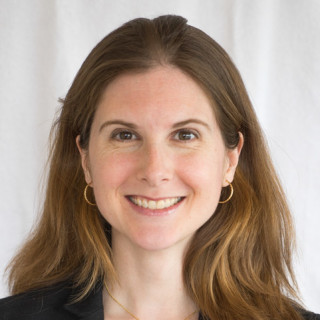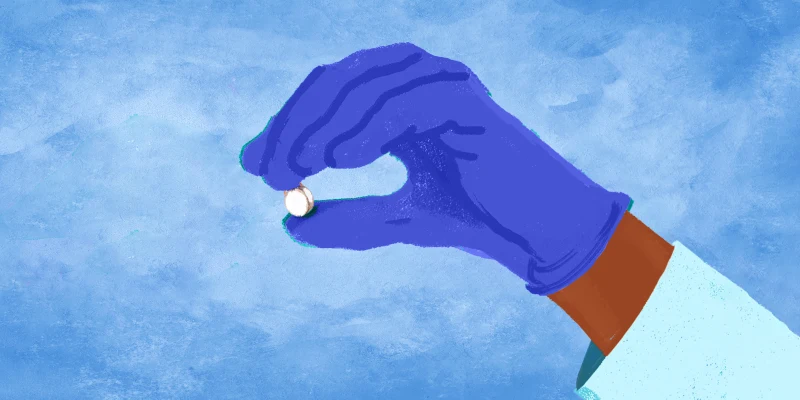I am in Room 10 in the pediatric ED, a room tucked in a corner that, along with its neighbors, has been designated a “behavioral health” room for patients with acute safety concerns. In my role as a pediatrics resident at a freestanding children’s hospital, I have had a busy afternoon. I am toggling back and forth between a 7-year-old with asthma who is now on her third breathing treatment and an infant with bronchiolitis who is likely destined for the ICU.
My new patient, a 13-year-old girl, is here after an aggressive outburst at school — the latest in a string of similar incidents. Her mother begins describing recent stressors, tearing up as she tells her story. After she has provided a brief overview of the events leading up to today, I ask her to leave so I can speak with her daughter alone. The minutes tick on. After interviewing and examining the patient, I reconvene with them both, mindful that I need to keep things moving.
“I’m so sorry you’ve been going through this. Someone from the psychiatry team will come and speak with you in more depth in just a little bit,” I say. I feel bad leaving their concerns unaddressed for the moment, but rationalize that this is the domain of another specialty. Anyway, I need to reassess my patient with asthma and I don’t want to keep that family waiting any longer.
Twelve months later, the tables have turned. Now, I am a trainee on the psychiatry team, caring for both children and adults as part of a combined child and adolescent psychiatry fellowship. In this new role, I find myself in the opposite situation. “You should address that with one of the medical doctors,” I say, when a patient protests that he no longer wants to take his medications for Type 2 diabetes or that his chronic back pain is poorly controlled. True, having a detailed conversation regarding the pros and cons of diabetes treatment modalities is outside my scope as a psychiatrist-in-training. But simply saying “the medical team will handle it” is a way of passing the buck.
My parallel experiences in pediatrics and psychiatry have made me reflect on two separate but related issues. The first is a question of whether we as clinicians are too quick to consult. Involving endocrinology may well be called for in a situation when a patient’s blood sugar is still high after trying oral medications first, and recruiting the help of the internal medicine team may be warranted to review the appropriateness of back imaging and options for analgesia in a patient with intractable musculoskeletal pain. Similarly, calling psychiatry to put together an agitation plan and options for outpatient therapy or partial hospitalization makes sense for the case of the aggressive teenager. But we should also push ourselves to become knowledgeable about topics outside of our domain. We should work to grow more comfortable caring for these patients — not only as a courtesy to the consulting service, but also because it’s better patient care, especially in an era in which children who present to the ED with mental health concerns are likely to stay there longer than ever before as they wait for inpatient beds.
The second issue, which I’ve become increasingly conscious of, is the divide between those physicians caring for mental well-being and those caring for the physical body. There are many reasons to view psychiatry as separate. First, psychiatrists look different. They generally don’t use stethoscopes or wear white coats, nor do they carry equipment like ophthalmoscopes or tuning forks. Notes written by psychiatry are often not accessible to medical peers, labeled “confidential,” and hidden in the medical record. When they are visible (for example, those written for a consult), they may contain hard-to-decipher terms, phrases such as “biopsychosocial formulation” in place of “assessment and plan.”
There is a physical separation, too: inpatient psychiatric units are isolated from the rest of the hospital, on locked floors that are devoid of tubes, lines, needles, and anything else that a patient could use to harm themselves. To some extent, the siloing is necessary; the safety of patients and staff would be jeopardized if these physical boundaries didn’t exist. However, too great a divide can be damaging on multiple levels. It harms relationships between clinicians, leading to poor communication between teams and a tendency to jump to the conclusion that it’s either “a psych issue” or “a medical issue” without recognizing that patients’ problems are often non-binary.
The medical-psychiatric divide can also lead to confusion surrounding which questions to ask when placing a consult, as well as the absence of collaboration when designing a medication regimen, assessing a patient’s capacity, or establishing delirium precautions. This can breed ill will and creates a vicious cycle in which both sides want to talk to each other as little as possible.
Finally, the divide can be damaging for patients. Often, it’s difficult for patients to understand how teams work together and what psychiatry can offer. When the psychiatry team shows up for a consult, patients and families are sometimes confused. “So you think I’m crazy?” one woman asked when I entered the room. “Is that why they called you?”
I propose that we take steps to break down the barriers. Let’s make an effort to communicate and collaborate better, to use language that is easily comprehensible, and to spend more time in each other’s arenas. For the sake of our patients and ourselves, let’s push ourselves to stay in the room longer.
Have you taken steps to break down barriers between your specialty and clinicians in other specialties? What did you do and was it effective? Share your experiences in the comments.
Phoebe Prioleau, MD is a first-year child psychiatry fellow in the Post-Pediatric Portal Program at Children’s Hospital of Philadelphia. Prior to fellowship, she completed pediatrics residency at UH Rainbow Babies and Children’s Hospital in Cleveland, OH. She studied French literature and art history before medical school and has published creative work on Doximity's Op-Med platform, The Living Hand, Annals of Internal Medicine, and The Journal of Medical Humanities, among other places. She has no conflicts of interest to disclose. Phoebe was a Doximity 2019–2020 Fellow and is a 2020–2021 Doximity Op-Med Fellow.
Illustration by Jennifer Bogartz




